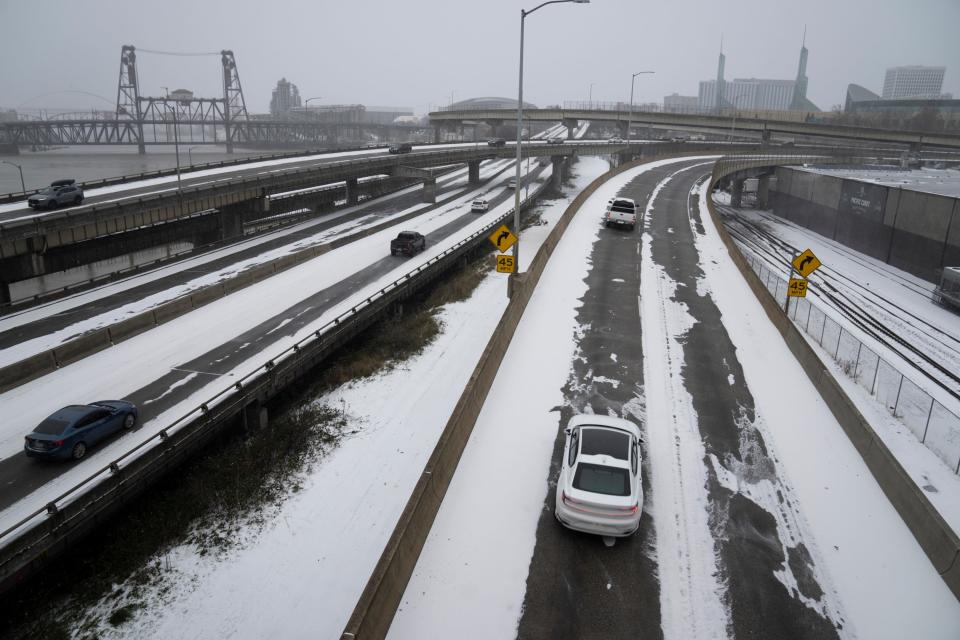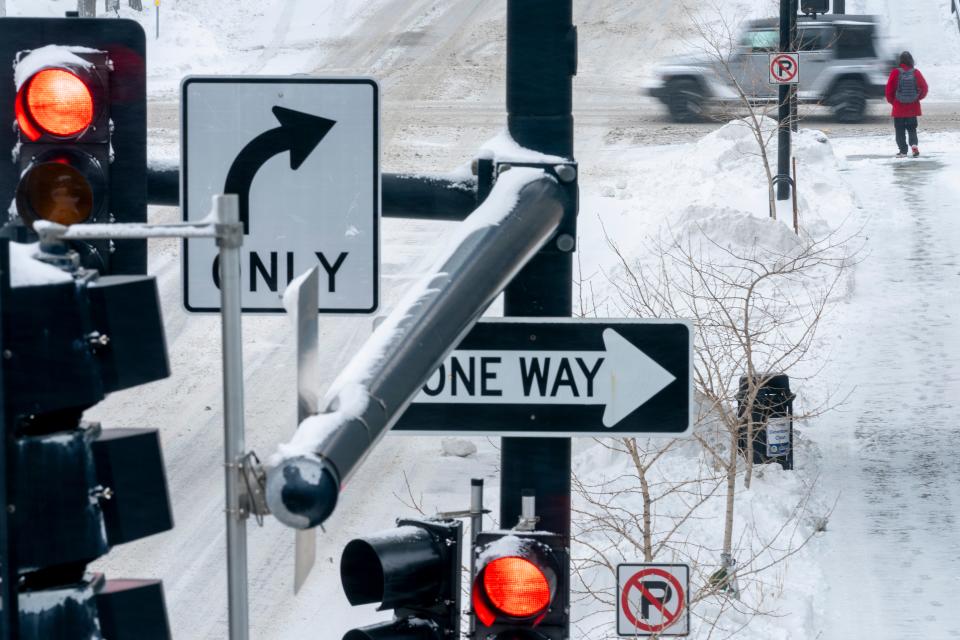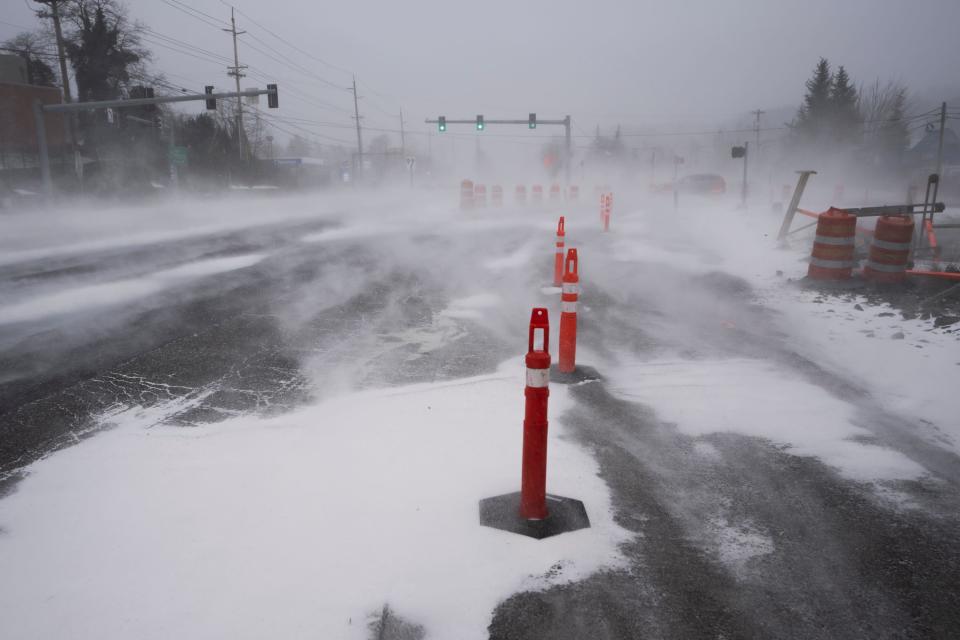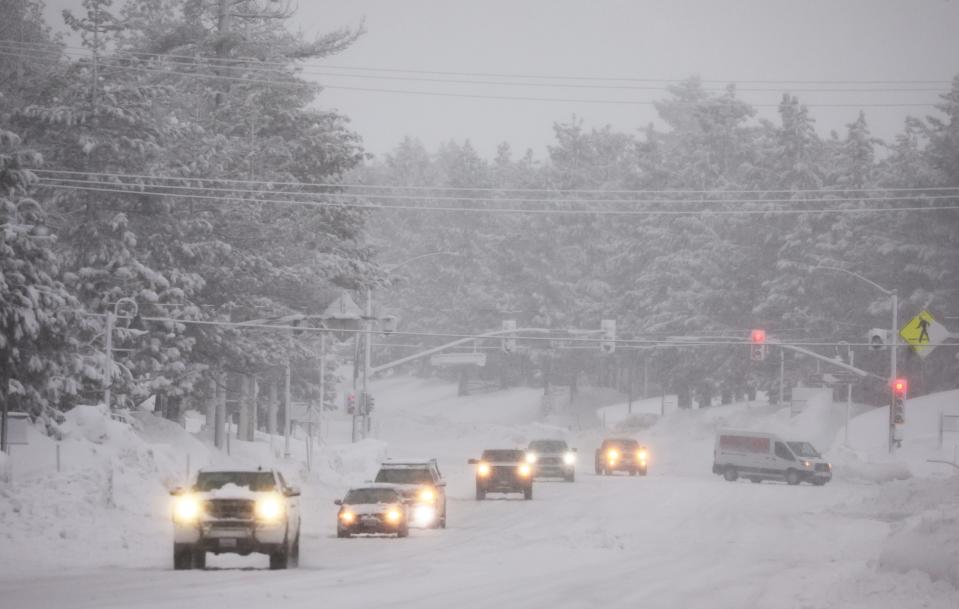The winter storm is creating dangerous road conditions. We have tips for driving in snow.
It’s been nearly two years since major cities in the Northeast have seen major snowfall (except for the Christmas Buffalo blizzard of 2022), but with a gnarly storm headed for the mid-Atlantic and the Northeast this weekend, that could soon change.
Winter weather is hitting much of the U.S. bringing with it freezing cold temperatures. The weather could continue in some areas through midweek. The National Weather Service says that blizzard -like conditions are possible in areas like New York. A driving ban has even been implemented in western New York.
Even for the most experienced northerners, driving in the snow can be challenging, especially if you're out of practice from a dry couple of years.
According to the U.S. Department of Transportation (DOT), car accidents related to weather kill more people each year than other major weather events such as tornados, heat, hurricanes, lightning or flooding.
Based on data gathered between 2007 and 2016, 1.2 million of the 5.8 car accidents that happen each year in the U.S. are caused by bad weather conditions. These weather-related crashes kill an average of 5,376 people annually.
While it's best to simply avoid traveling when conditions are poor, that isn't an option most people have in their day-to-day lives. The next best thing? Make sure you're prepared and know how to drive in the snow safely.

Winter weather is sweeping USA: Driving ban in Western New York; 500K power outages
AAA tips for driving in the snow
USA TODAY spoke with the teacher of driving teachers, Bill Van Tassel, the manager of driver training programs at AAA. He explained some of the science behind the most valuable driving trips and shared some common driving mistakes.
Snow decreases tire traction. Drive defensively.

Van Tassel explained that tires have far less traction on snow and ice than in dry conditions. That means that any sudden car movements – stopping, accelerating, or turning – could cause the tires to skid on top of the snow. Therefore, normal measures to avoid a collision might not be accessible, and drivers should seek to distance themselves from other cars.
“It’s good to start out with a mindset that there are deadly threats in all directions,” Van Tassel said. “(Assume) other road users are going to take the action that will put you at the most risk … so you need to have a plan to deal with it.”
Here is how to drive defensively in the snow:
Don’t drive too fast
Keep plenty of space around the vehicle
Only use driver-assisting technology as a backup
Look far ahead
Use smooth actions, like turning, braking or accelerating
Avoid driving downhill
Know (and prepare) before you go

Van Tassel said that, if it is necessary to drive in the snow, there are some things you can do to better plan for the journey. First, he said driving in the snow takes a great deal of focus, so he encouraged drivers to be well-rested, sober and distraction-free.
Make sure your car is ready by checking the following:
Tires should have good tread and be properly inflated.
Ensure all lights and sensors work.
Clear snow and dirt from all lights and sensors.
Clear snow and ice off of all windows and mirrors.
When venturing out, you should pack your car with emergency essentials that will come to your aid in case something goes wrong. For example, you could get stuck in the snow, and the right tools could help you get unstuck. If you stay stuck, emergency preparedness items could help you survive until the snow clears and you can be rescued:
Polarized sunglasses.
Water.
Food.
Battery charger.
Extra warm clothing.
Blankets.
Gloves.
Flares.
Tools.
Towels.
“If you have it, and you don’t need it, fantastic,” Van Tassel said. “If you don’t have it, you might really need it.”
Northeast snow: Big snow storm in Northeast to start 2024? Forecast says snow could finally be on the way.
NHTSA tips for preparing your car for snow

As mentioned by Van Tassel, a big part of driving safety is about preparation. While it's important to check that things are ready to go directly before heading out, there are things you should do even further in advance to ensure your vehicle is in tip-top shape to weather the storm.
According to the National Highway Traffic Safety Administration, good prep includes:
Visit your mechanic and get your car serviced before the season starts. Make sure they check for leaks, worn hoses, break pads and other parts that may need repair.
Check for recalls. Use USA TODAY's recall database and NHTSA's Recalls Look-Up Tool to check information about your car. If you discover that a recall has been issued, you can find out how to get the repair done for free.
Make sure you're familiar with your car. Familiarize yourself with your vehicle's built-in safety features and those that may affect driving on slippery roads, such as antilock brakes. Get familiar with how your car performs before taking it out in more treacherous conditions.
Charge it up. For electric and hybrid vehicles, be sure your battery is charged and ready. If your car has a thermal heating pack for the battery, plug it in when not in use. Preheat your car before unplugging it in the morning.
Plan, plan, plan. Map out your exact route before leaving and check ahead for road conditions, traffic, hazards and weather. Give yourself plenty of extra time to get where you need to be so you don't feel inclined to rush and make sure you have an alternative means of following your route if your GPS stops working.
This article originally appeared on USA TODAY: Tips for driving in snow: How to navigate the winter storm safely

